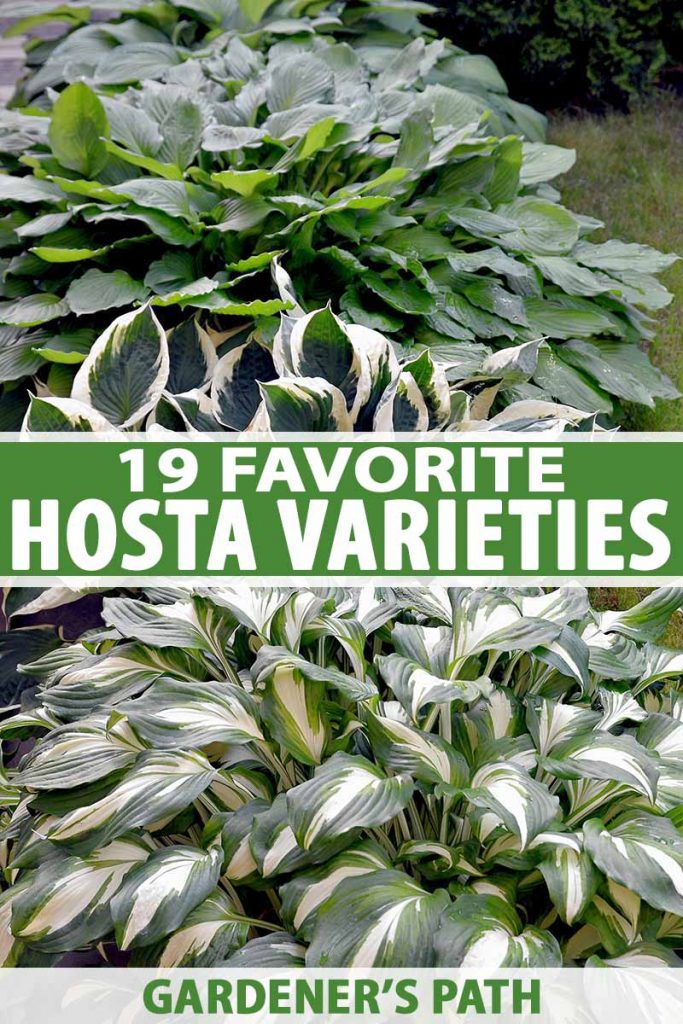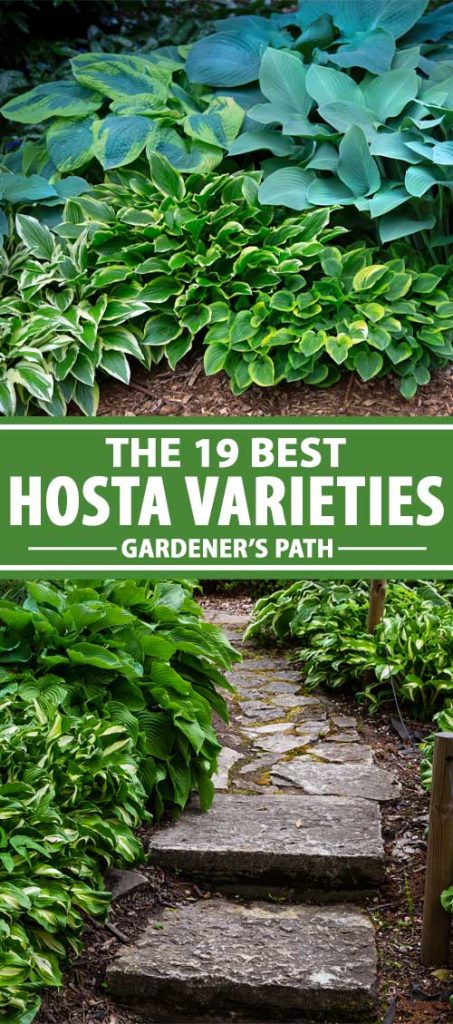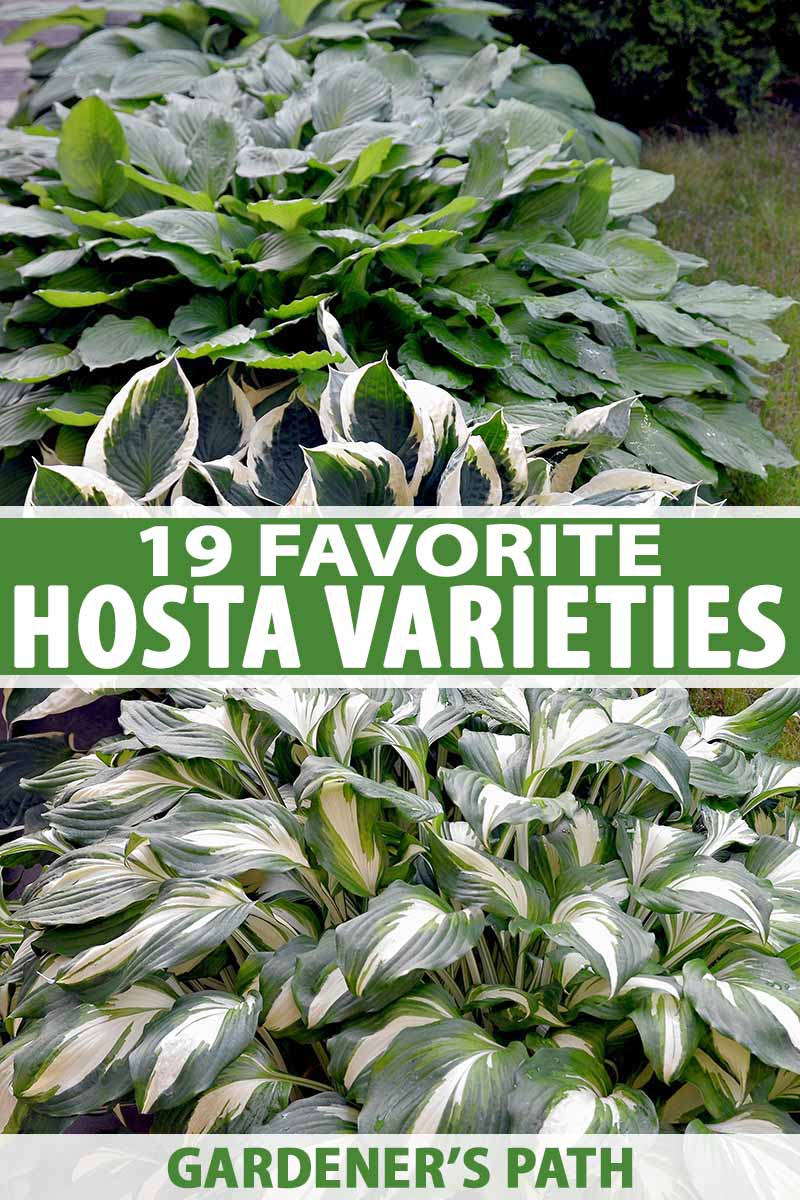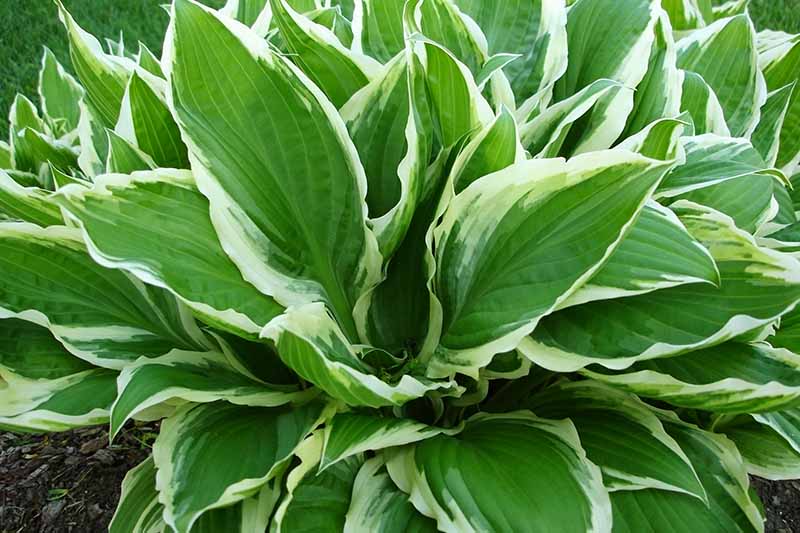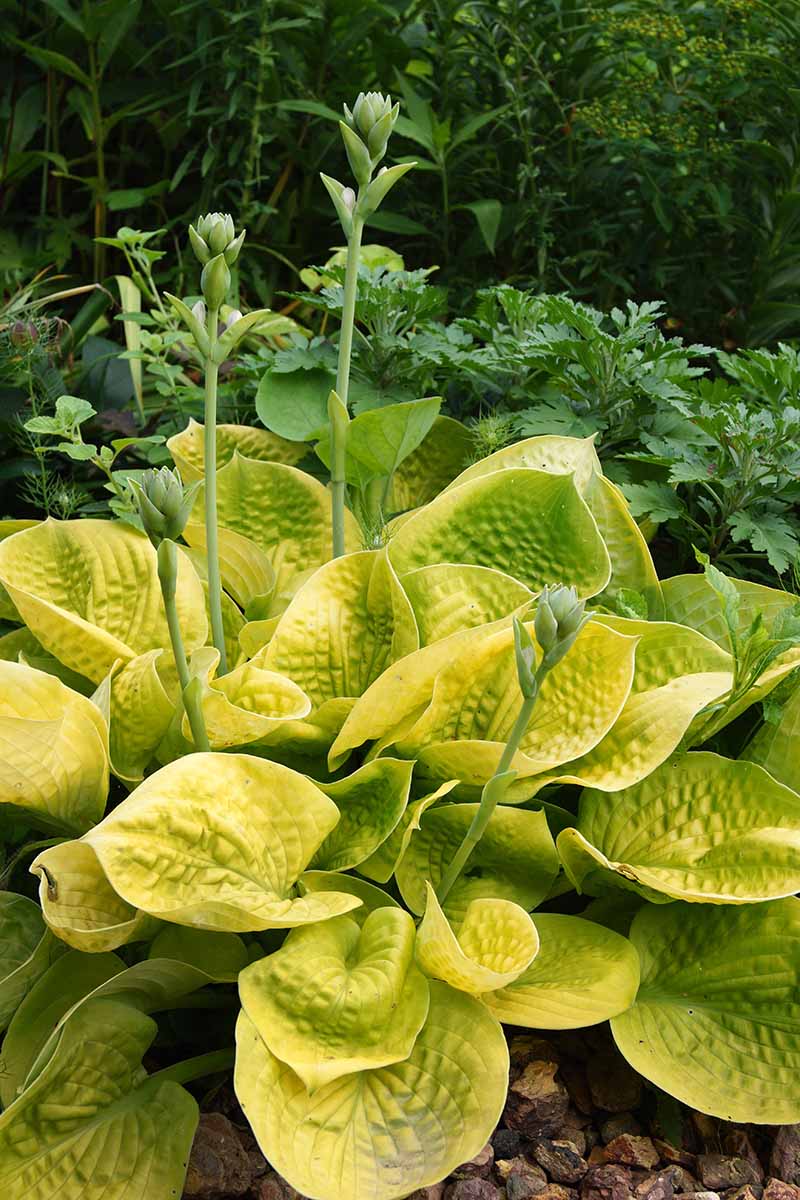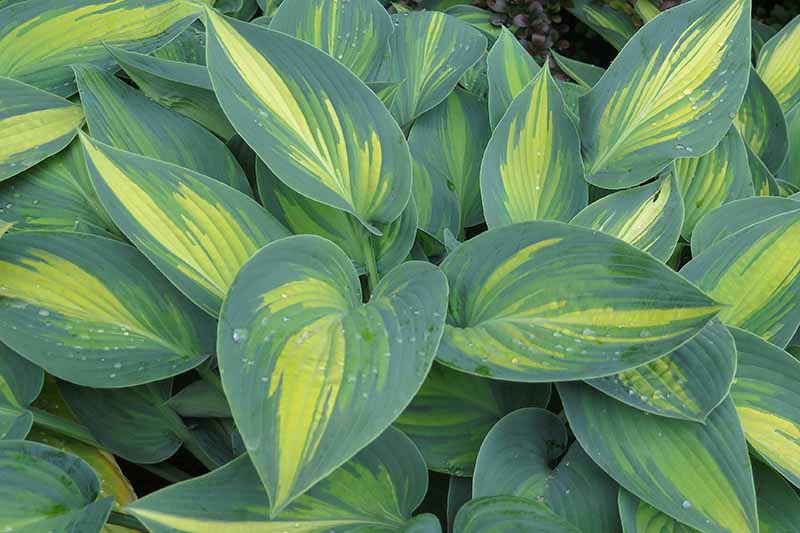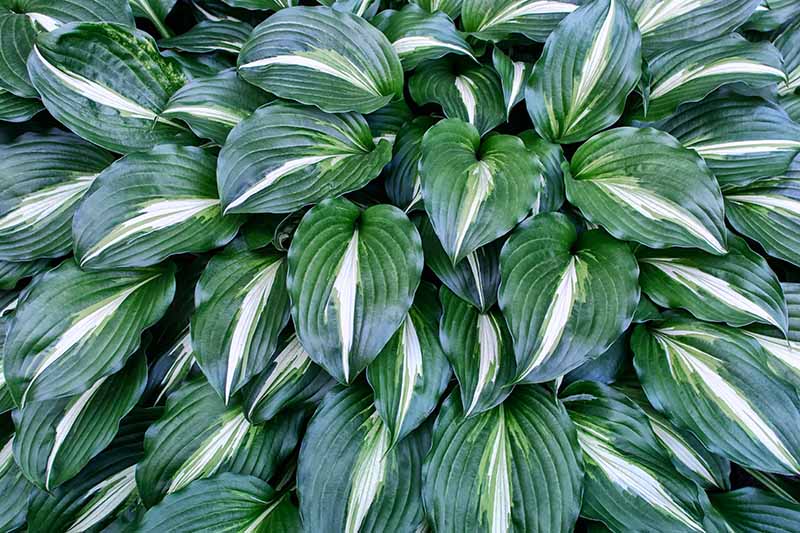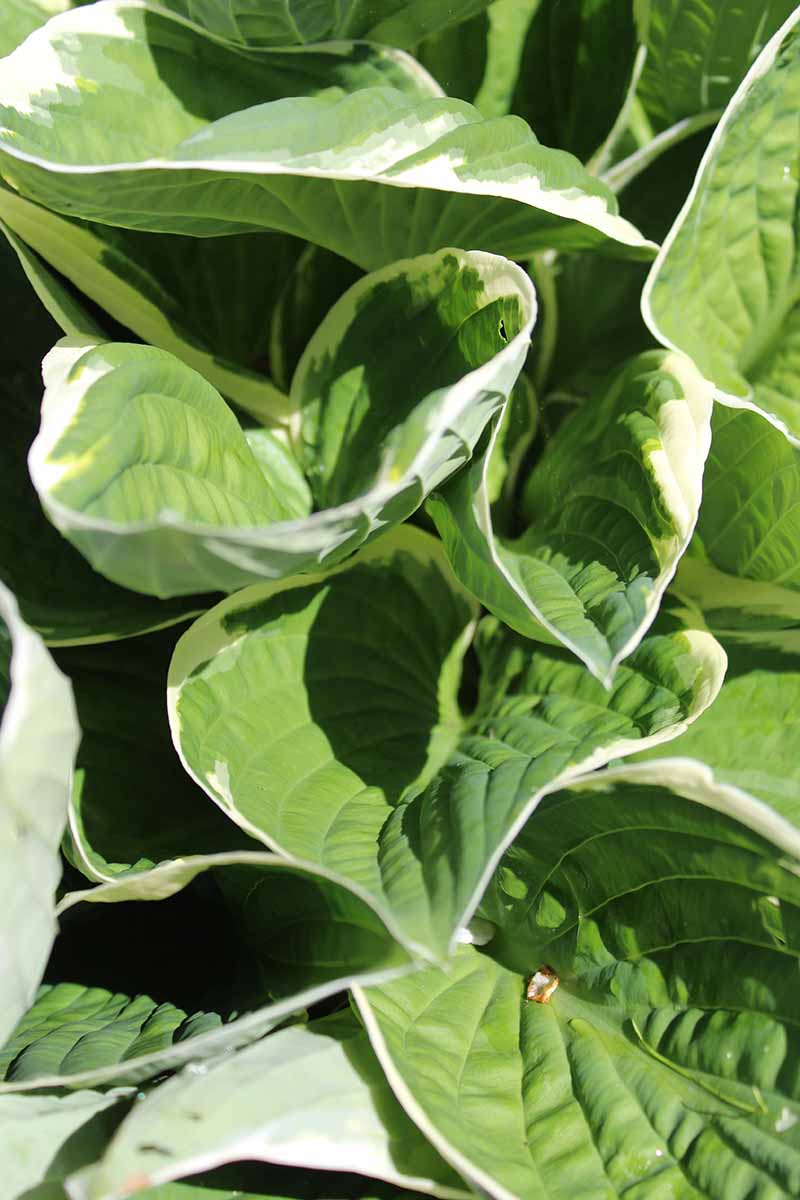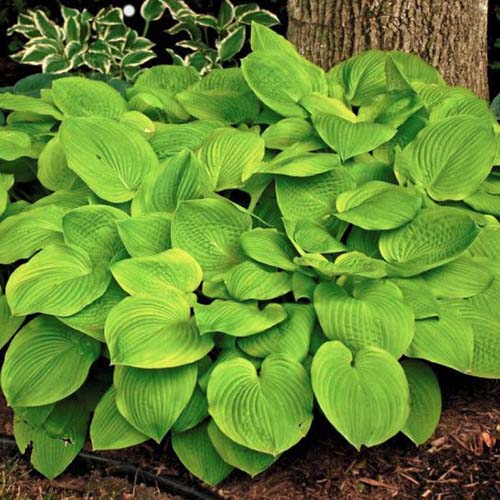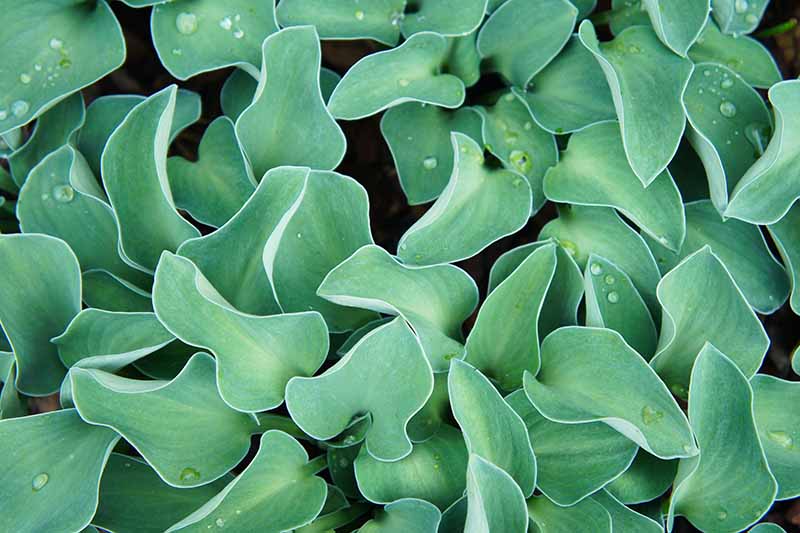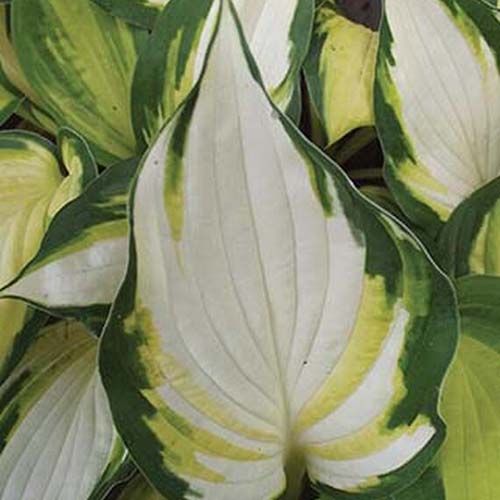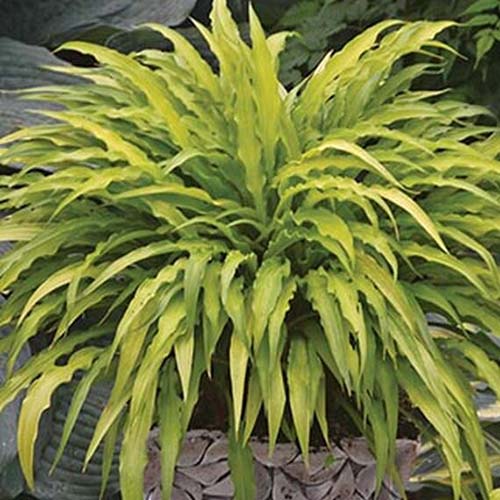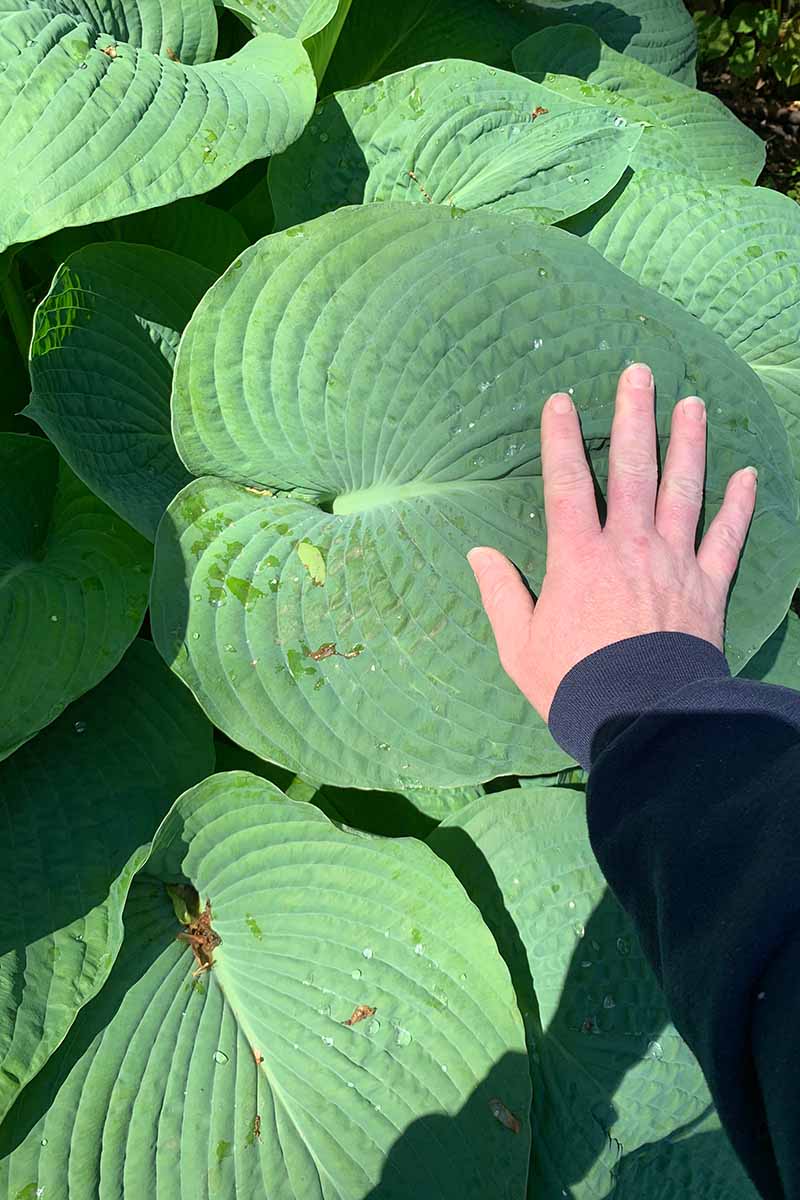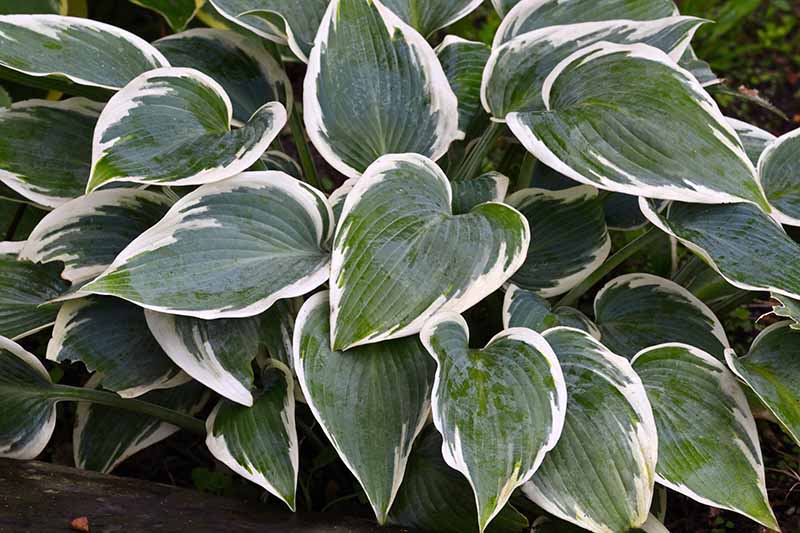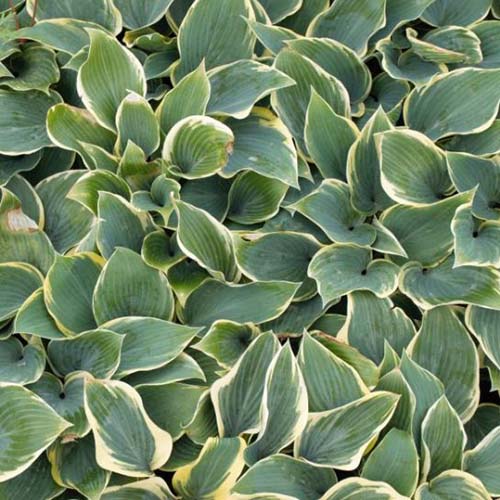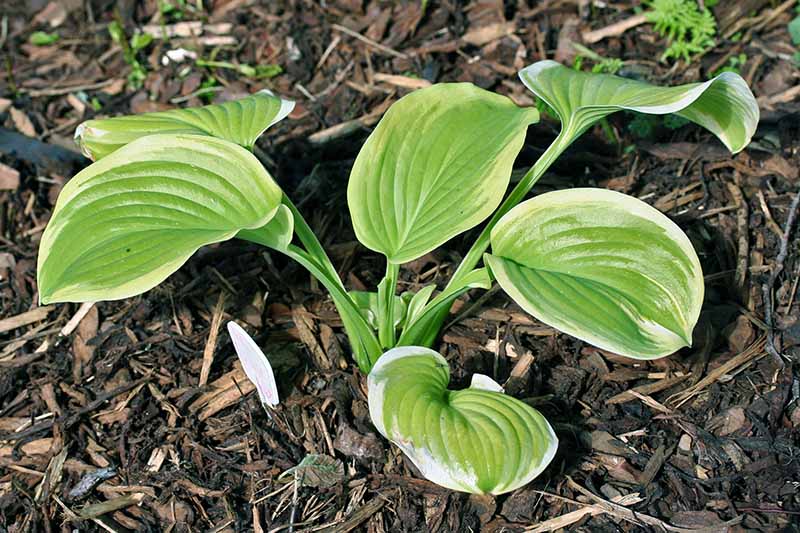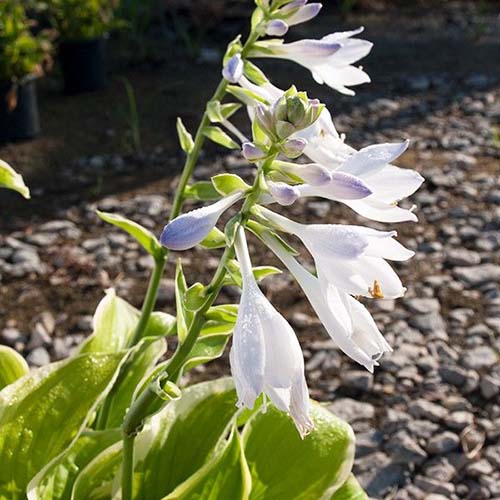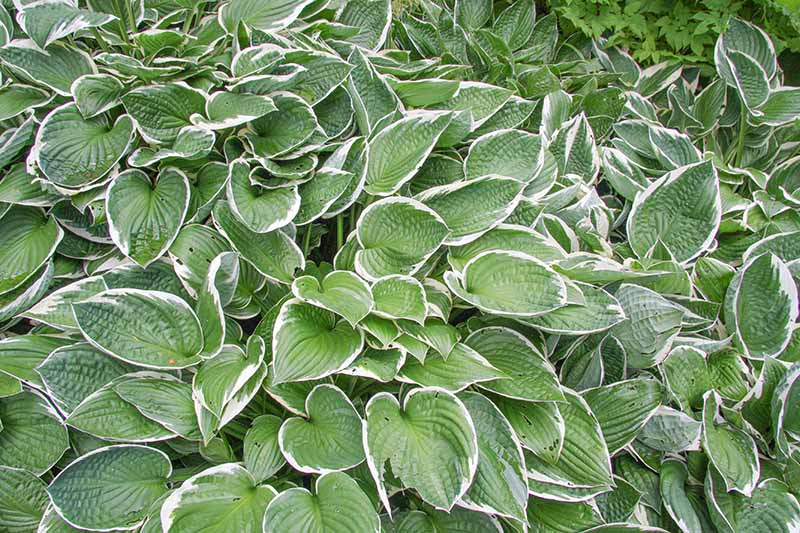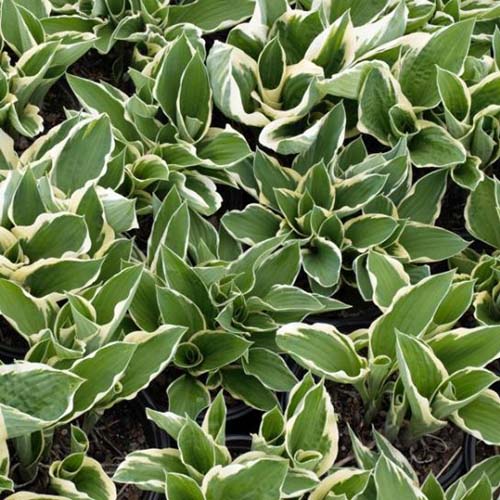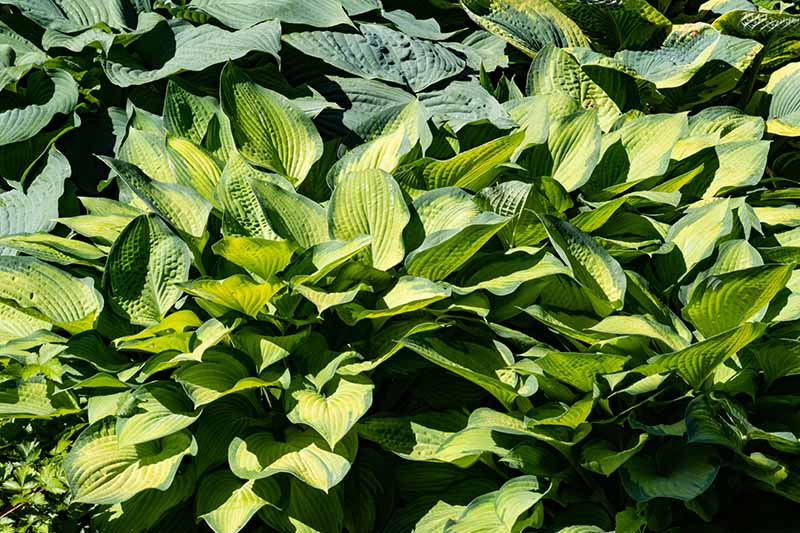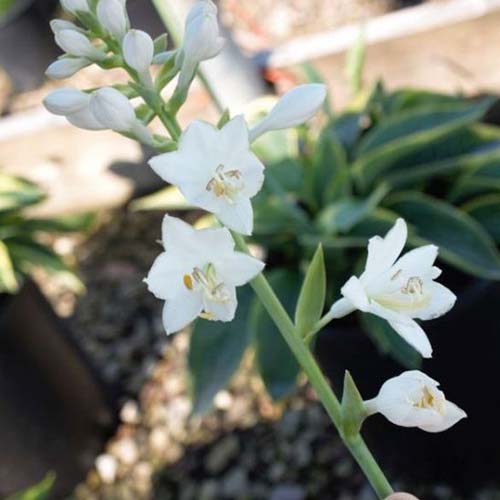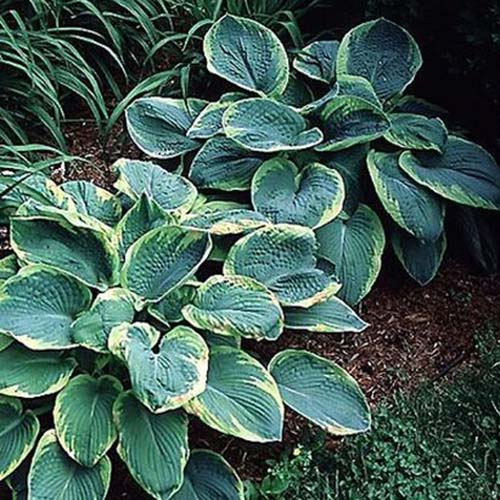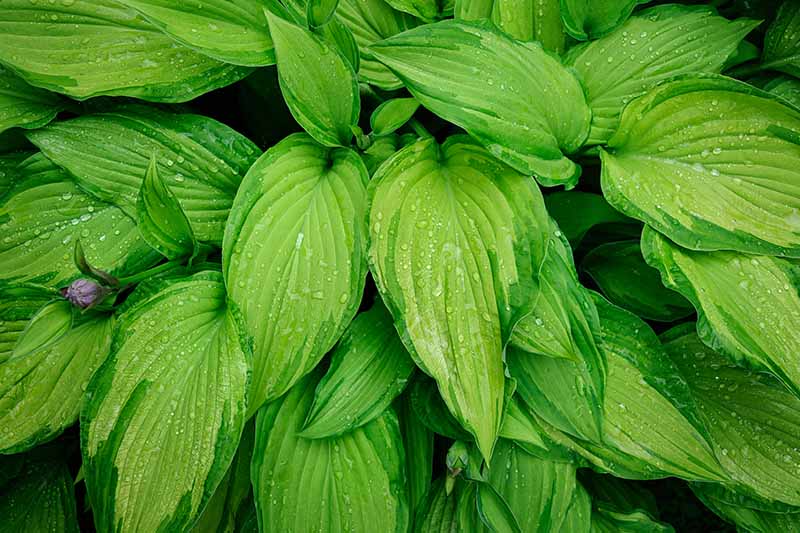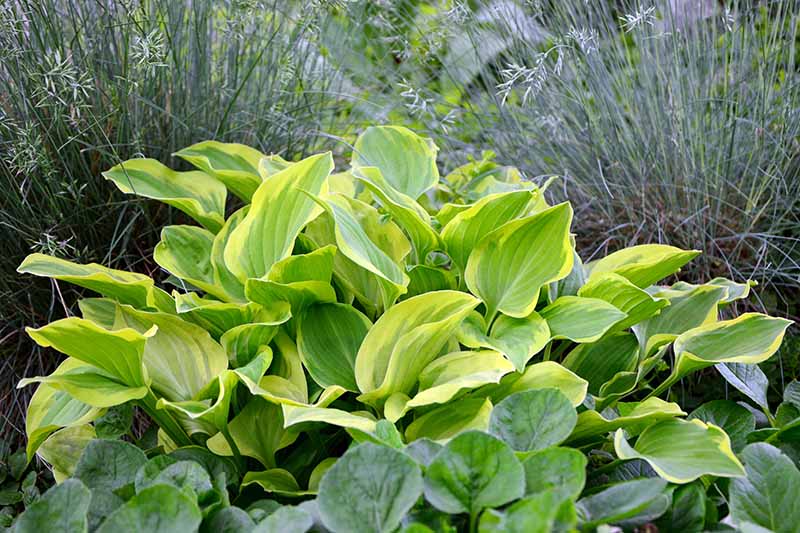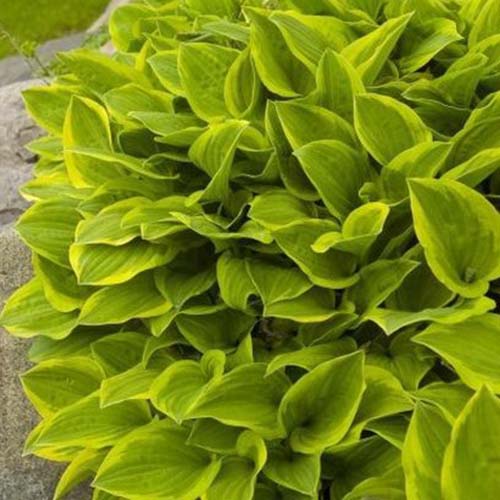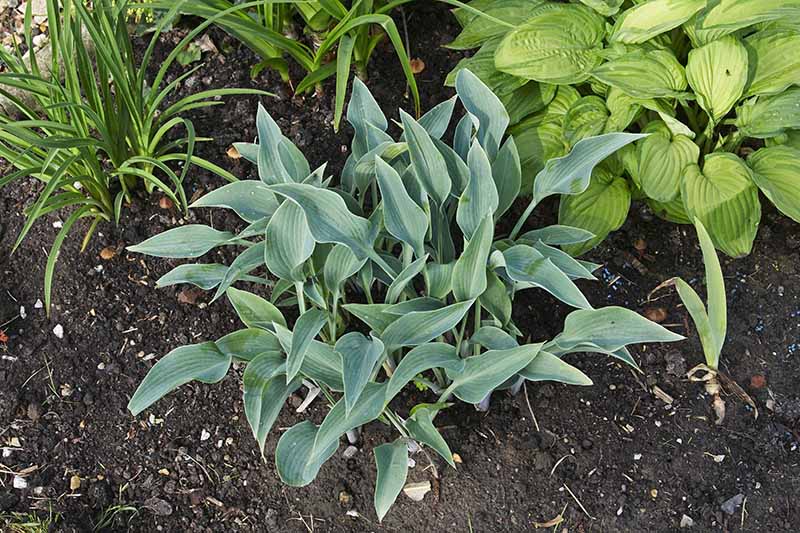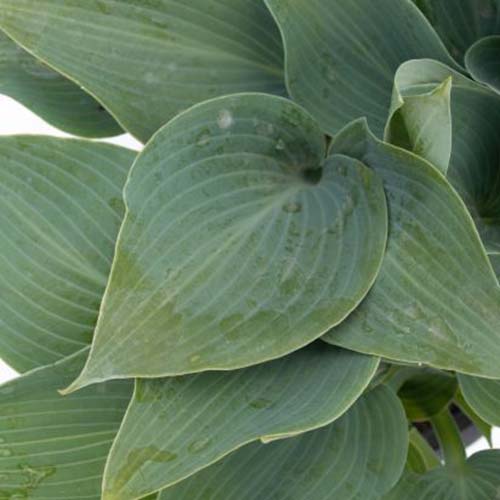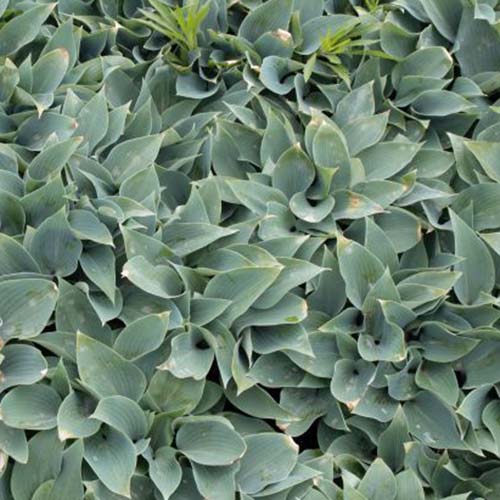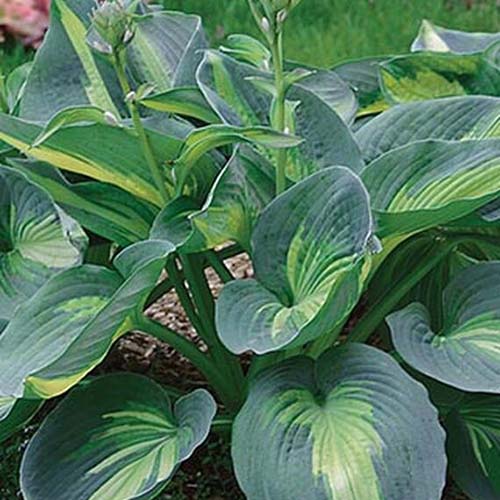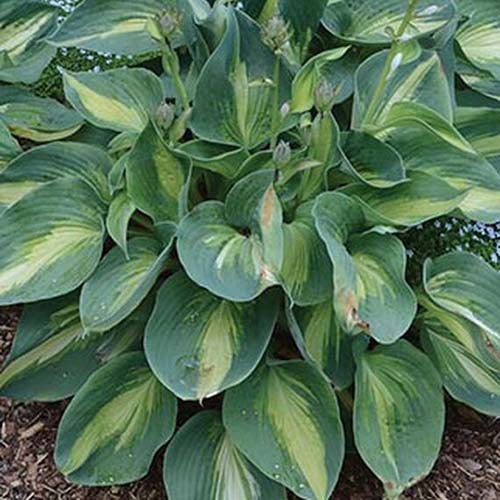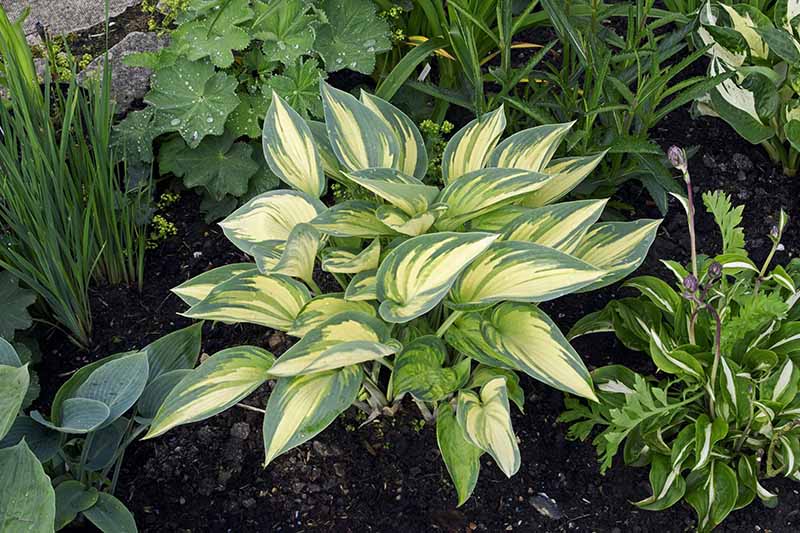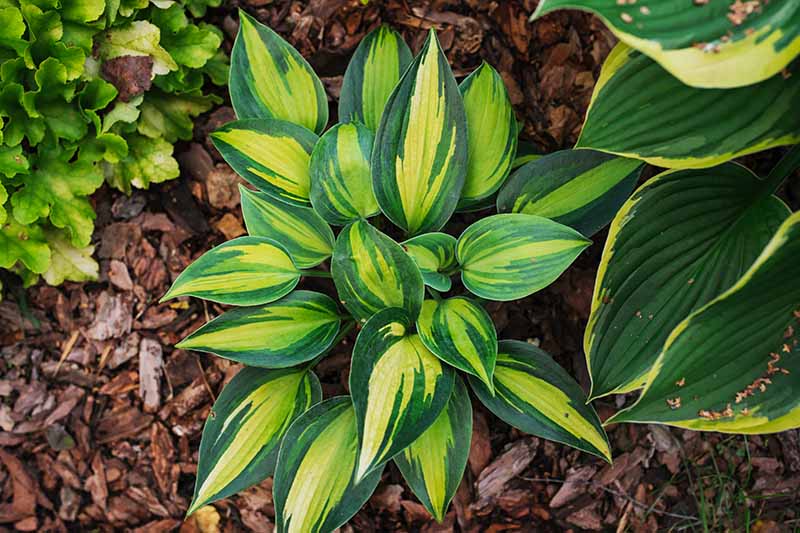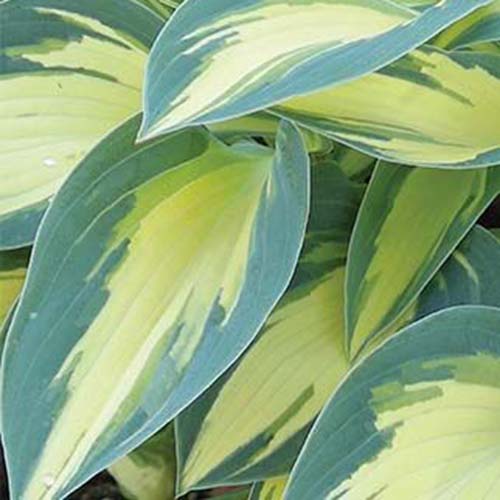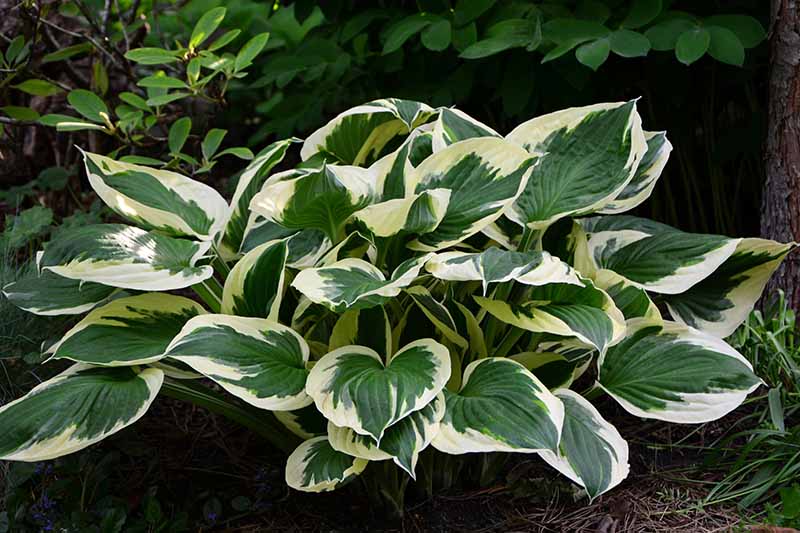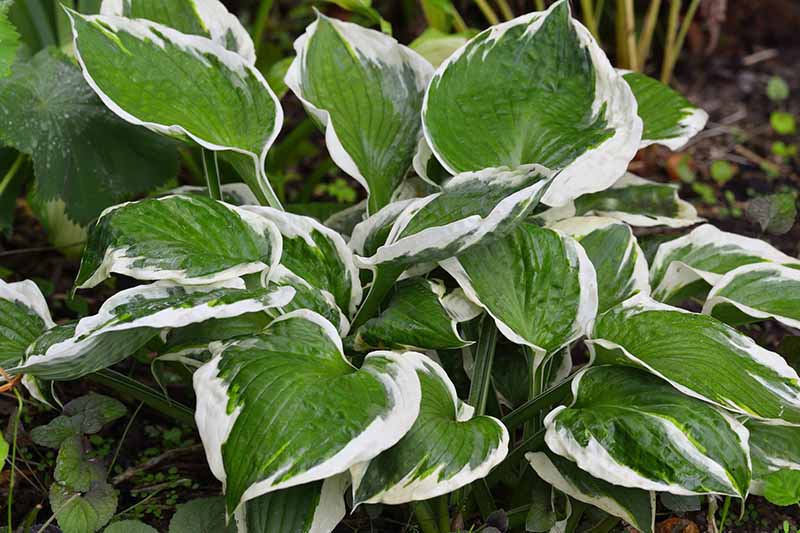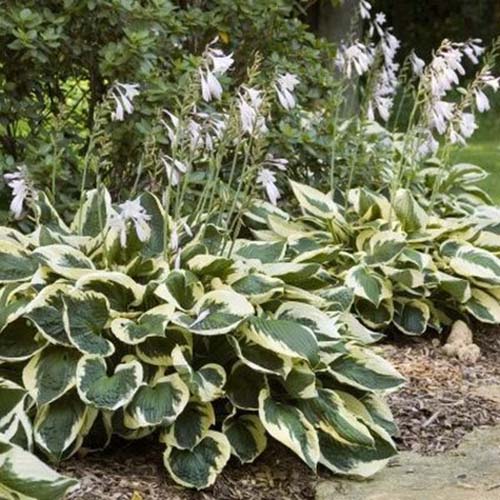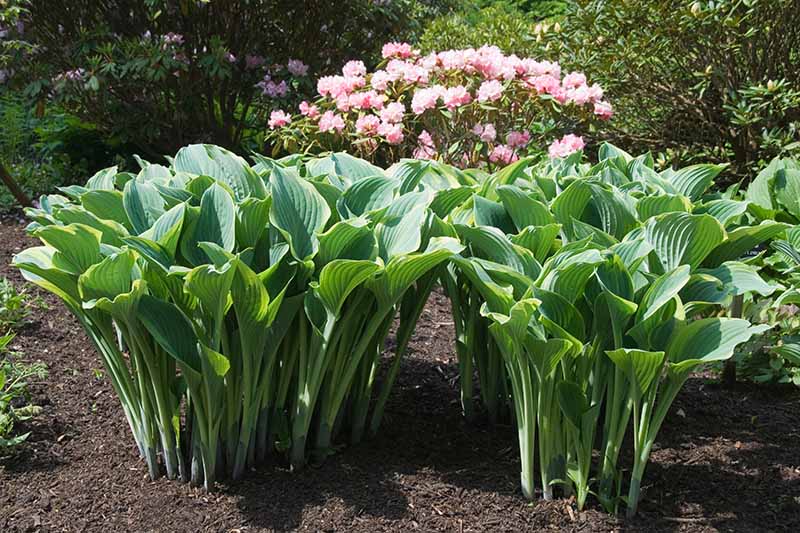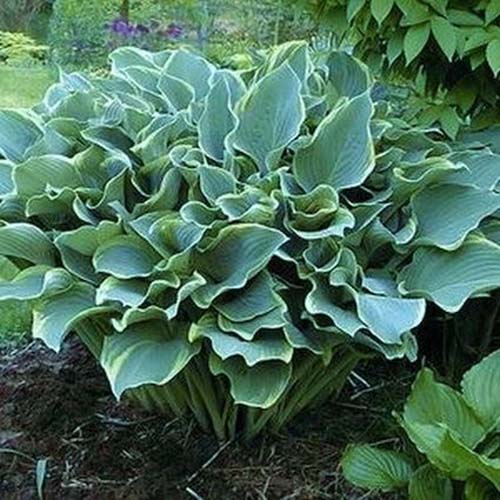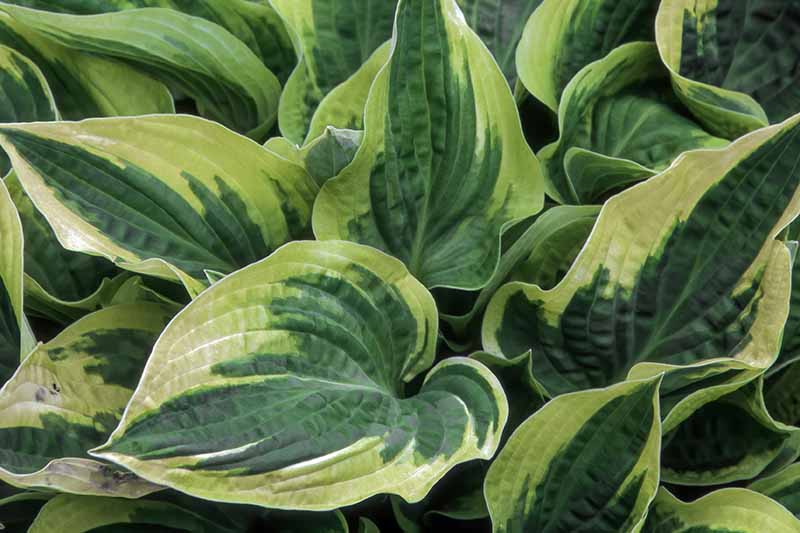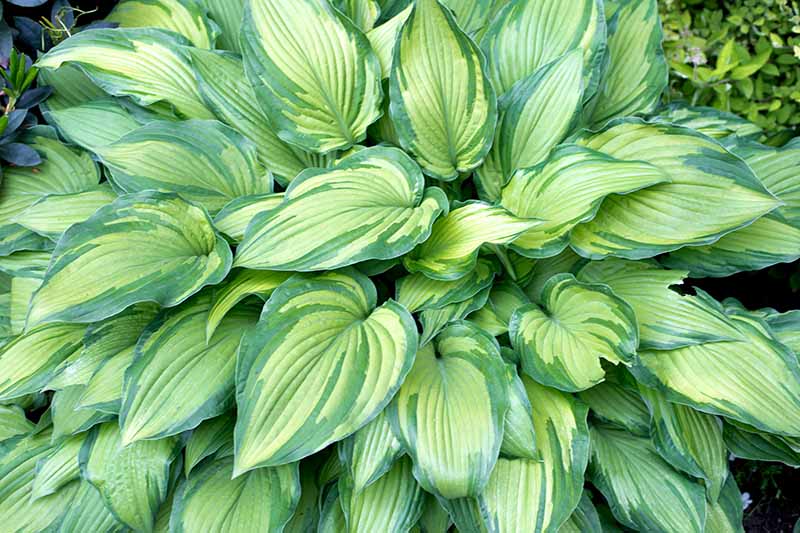But even if you’re working with a tiny patio garden without a speck of naturally composted leaf litter in sight, if you’ve got a shady spot in Zones 3-11, the only question really is this: Which hosta to choose? We link to vendors to help you find relevant products. If you buy from one of our links, we may earn a commission. For those of you without mature shade trees on your property (I get it, less leaves to rake) there are even drought-tolerant types suited to sunnier spots. And some with thicker leaves are even claimed to be slug resistant.
Pick your pleasure, from green and white to gold, or even blue, with spiky, heart-shaped, or mouse-eared foliage. Though hostas aren’t known for their flowers, there are a few fragrant standouts that the pollinators who visit your garden space will love. If you’re lucky, maybe a fairy or two will even pop on by once in a while… There were many moments while I was growing up when my grandparents’ garden was truly magical, a safe haven for daydreams and make believe. I think the hostas played a big part in that. Ours were unobtrusive, all of the same variety with leaves large enough for dolls or squirrels to use as shelters from the rain, and pale lavender flowers on tall stalks. But they were always there, and they can hold a place as constant companions in your woodland garden as well.
I’d like to say I narrowed this roundup down to my absolute top picks, but there were honestly too many fascinating varieties to choose just a few. This is a pretty thorough compendium, but if you have a big enough garden, you don’t have to choose just one type like my grandparents did. Live a little, and make a few new friends in the wide world of hostas. With over 3,000 registered varieties to choose from, this is a sampling of 19 of my favorites. And they’re ready for planting, in your own special outdoor space.
19 of the Best Hostas for Gardeners in Zones 3-11
Most hostas do well in full to partial shade, and they’re not suited to hotter areas of the US. For the best color, a space that offers some morning sunshine during the growing season, with dappled to full shade for protection in the heat of the afternoon, is ideal. And they’ll likely need some supplemental water during summertime heatwaves.
Sure, you might find yourself shooing deer and picking off slugs to protect your plant babies, particularly when they’re still small and becoming established. But these are relatively effortless plants to grow otherwise, perennials that are suitable for division as they mature. Many offer multi-season interest with color changing leaves that put on a continual show right through to the fall, and white or lavender flowers.
You will notice that “sports” are sometimes mentioned below, and I’m not talking about baseball here (though I do love my baseball – Go Phillies!). In a clump of hosta foliage, breeders will sometimes notice a leaf bud nestled in there that stands out from the rest. These mutants are our friends, beloved among members of the worldwide hosta fan club, and they are responsible for the development of new cultivars – sometimes. Some sports are not good sports, and full-grown plants that are sports of another cultivar will occasionally revert in part back to taking on the appearance of their mother plants (some of us can only rebel against our mothers for so long, after all…). Some gardeners will remove and discard sports and reversions, to start new plants or to make a fresh addition to the compost bin.
I’d like nothing more than to gaze at the colorful foliage of ‘August Moon’ in the daytime, with a good book and a glass of sweet tea at hand, and to be able to marvel at the full Sturgeon Moon when it rises at night. #hostagoals
‘August Moon’ With an average height and spread of 24 by 24 to 36 inches, and a medium growth rate, this cultivar is suited to Zones 4-8. Plants in #1 containers are available from Nature Hills Nursery.
2. Blue Mouse Ears
You’d be hard-pressed to find a cuter name than ‘Blue Mouse Ears,’ and this little sweetie lives up to his name with a height and spread of just 6-8 inches, and round blue-green leaves.
He bites back, in a sense, with thick leaves that are resistant to slugs. And with lavender flowers that are showier than those of some types, rising on scapes up to a foot in height, the hummingbirds and butterflies will be happy to see this little guy.
‘Blue Mouse Ears’ Plant this miniature, clump-forming cultivar as a ground cover in Zones 3-8. Plants in 4-inch pots and bare root plants are available from Burpee.
3. Color Festival
If you’re tired of solid hues or even bicolors, this tricolor hosta is the answer. Mostly white leaves or pale yellow-green leaves, with yellow accents and dark green margins, provide colorful interest in the garden. I love the way each leaf of this variegated cultivar is different. Known for its fragrant pinky-lilac flowers that the hummingbirds will love, with scapes soaring to 24 inches above the ground, ‘Color Festival’ is a drought tolerant variety best suited to Zones 3-8.
‘Color Festival’ With a height and spread on the smaller side of the scale, this type will reach 16-18 inches in height at maturity, with a spread of 12-16 inches. Live plants or bare roots ready for planting are available from Burpee.
4. Curly Fries
As someone who had never eaten a curly fry until I entered high school and discovered that my cafeteria offered them daily, you better believe I made every effort to make up for lost time, with lots of Heinz ketchup on the side and a smile on my face. You won’t want to eat these (probably? Young hostas are technically edible and eaten in a variety of styles, most commonly in Japan – just don’t let your pets get to them, since they are toxic to cats and dogs). But the chartreuse, rippled, narrow leaves that this plant features will add a touch of whimsy to your garden space, whether you feel they’re worthy of their potatoey moniker or not.
‘Curly Fries’ With an arching mounded habit, and lavender flowers in the summertime, this tiny cultivar reaches a height of 6-16 inches and a spread of 12-18 inches. It’s best suited to Zones 3-9. Plants in 4-inch pots or bare root plants are available for purchase from Burpee.
5. Empress Wu
Burpee claims this is “very possibly the largest hosta you can buy.” And her claim to fame is a height of 3-4 feet with a spread of 5-6 feet. That’s per plant. ‘Empress Wu’ isn’t messing around, and she has a commanding presence.
In fact, the real Empress Wu Zeitan was the only female emperor to rule China, and she reigned long, long ago, during the Tang Dynasty. Taught to read and write as a child, which was particularly unusual for young girls at the time, she was known for her beauty and joined the royal court as a concubine to Emperor Taizong as a young teenager. Originally responsible for the royal laundry, she was quickly promoted to the position of secretary to the emperor. She later married his son, then took control after he died, put her sons in charge, and then took them right back out of charge when she saw fit. Get it, girl. (Okay, she allegedly also murdered her daughter… her story is complicated, but she fought the man in a truly awesome and historic way.) But I digress…
Her deeply veined (the plant’s, not the real-life empress’s), glossy green leaves with a tinge of blue when they sprout in the spring are 28 inches long and 25 inches wide, and she sports lavender flowers on short scapes that peek just above the leaves.
‘Empress Wu’ This cultivar has a semi-upright, mounding habit. Give her five years, and she’ll grow to be a giant in Zones 3-9. Shadowland® ‘Empress Wu’ bare root plants are available from Burpee.
6. First Frost
With leaves that look as if they were kissed by the first frost of winter by the end of the season, this sport of ‘Halcyon’ starts with deep blue leaves with gold, irregular borders that fade to pure white in the fall.
Named the 2010 Hosta of the Year by the American Hosta Growers Association, ‘First Frost’ also features pale lavender flowers that grow on tall 28-inch scapes. This variety is known for being resistant to pests, with a medium growth rate.
‘First Frost’ At maturity it will reach 12-15 inches in height with a spread of 36 inches, given the conditions that it likes best in Zones 3-9. Plants in quart-sized containers are available from Nature Hills.
7. Fragrant Bouquet
Bi-colored apple-green leaves edged in white aren’t the only thing to love about this cultivar. Unlike many other varieties, its large lavender to cream-colored flowers are highly fragrant, hence the name.
Pollinators like hummingbirds love these, and ‘Fragrant Bouquet’ will thrive in shaded gardens or areas with morning sun in Zones 4-11.
‘Fragrant Bouquet’ This cultivar reaches 18-24 inches in height at maturity with a spread of 24 inches, and a quick growth rate. Plants in #1 containers are available from Nature Hills Nursery.
8. Francee
If you’re a fan of hostas with those classic white-edged leaves, and you thought you had too much sunshine to make this beloved plant work in your space, ‘Francee’ is your friend. And you’re not alone – this is a beloved H. fourtunei cultivar.
A vigorous grower with a mature height and spread of 18 inches by 36-48 inches, ‘Francee’ has dark green and white heart-shaped foliage and tiny trumpet-shaped white to lavender flowers. She also boasts a mounding habit, and is drought tolerant once established, in Zones 3-8.
‘Francee’ Plants are available from Nature Hills Nursery in #1 containers.
9. Frances Williams
If you’re on the lookout for a giant cultivar to make a splash in your shade garden, this might be it. She’s more diminutive in size than ‘Empress Wu,’ but her story is another one for the ages.
A sport of ‘Elegans,’ this is one of the best-known hosta cultivars. Named after Frances Rope Williams, one of the first landscape architects to graduate from MIT and a lover of hostas, she wrote about them and helped to connect hosta fans with each other wherever she could. Her work led to the formation of the American Hosta Society. Williams once discovered a variety that she thought was particularly special at a nursery in Connecticut in 1936. Originally named H. sieboldiana ‘Aureomarginata,’ it was renamed by the famed British gardener George Robinson at Oxford University. Large green leaves with chartreuse edges that look as if they were painted with watercolors are a standout feature of this cultivar, and they can grow to be over a foot each in either dimension! Not to mention the height and spread of this plant at maturity – we’re looking at 12-24 inches tall, with a 48 to 60-inch spread.
Give ‘Frances Williams’ plenty of room to grow, and she will stun with white flowers in the summer, and leaves that fade to yellow in the fall. This plant grows slowly and is best suited to Zones 3-9, perfect for filling in a large empty space in your garden. Keep an eye out for what’s known as “spring desiccation burn,” a condition known to plague blue-green and gold hostas with large leaves, like this one. With too much sun exposure combined with high winds and freezing nighttime temperatures in early spring, gold sections lose their pigment, turning clear, drying out, and eventually dying.
‘Frances Williams’ Provide a little extra protection for this and similar cultivars during unexpected springtime cold spells to ensure healthy foliage later in the season. Plants in #1 containers are available from Nature Hills.
10. Gold Standard
With large color-changing leaves spanning 8 inches in length and 5 inches across that begin deep chartreuse with mottled green edges and morph to golden yellow and cream through the summer(!), this shade-lover is an excellent option for Zones 3-8.
It does nicely in well-draining containers as a specimen plant, with small, pale lavender flowers in midsummer. You can expect this popular cultivar to reach a height of 12-24 inches at maturity, with a spread of 3-4 feet.
‘Gold Standard’ As for the growth rate of this type, it’s somewhere down the middle. Standard, even. Plants in #1 containers are available from Nature Hills Nursery.
11. Golden Tiara
As if its stunning, tiny, and thin green and gold heart-shaped leaves weren’t enough, ‘Golden Tiara’ is rather unique among hostas as a variety not only known for its profusion of dark lavender flowers, but for its ability to rebloom if it’s deadheaded after the first flush of blossoms.
With a clumping habit and a compact form, this cutie is also tinier in stature, reaching a height of just 6-12 inches at maturity with a spread of 24-36 inches. And it grows quickly, to boot!
‘Golden Tiara’ Plant ‘Golden Tiara’ in Zones 4-8 for best results. Plants in #1 containers are available from Nature Hills Nursery.
12. Halcyon
This is one cultivar that I can’t say with certainty that I ever recall seeing in person (I’ve known a lot of hostas in my day, but I’m bad with names, and they have a tendency to mumble). But its unique hue reminds me of that of the Statue of Liberty, a well-aged green copper patina that some plant marketers apparently choose to describe as “ocean blue.”
Halcyon was also the name of my college yearbook, and my undergraduate studies were filled with halcyon days of sunbathing in courtyards, stopping to smell the nodding blooms in the rose garden, wandering in the woods, and splashing in the creek. Sometimes I went to class, too. Apparently, this word is more specifically associated with a period of time around the winter solstice that’s known for calm weather, named after the halcyon bird of Greek mythology who was said to quell the wind and calm the sea. There’s a lot to unpack there.
Whatever color you see personally when you look at these, or whatever memory you associate it with, there’s no doubt about it – ‘Halcyon’ is truly something special. With thick, spear-shaped, textured leaves that are purportedly slug resistant, pale lavender flowers known to attract hummingbirds, and a mounding shape reminiscent of a spilling fountain, Nature Hills Nursery claims this is “one of the best hostas available.” In Zones 4-8 (or 3-8, depending on who you ask), you can expect a mature height of 12-26 inches and a spread of 30-36 inches.
‘Halcyon’ Winner of the Award of Merit granted by the American Hosta Society in 1997 (the second-highest honor awarded by this organization after the Benedict Medal for Garden Performance, named for noted hosta hybridizer Dr. Herb Benedict), this oldie-but-goodie is sometimes described as a vigorous but slow grower, while others claim it has a medium growth rate. You’ll have to be the judge when you purchase this one for your own garden. Let us know in the comments below how you rate its pace! Find ‘Halcyon’ plants in #1 containers at Nature Hills Nursery or bare root plants from Burpee.
13. Hudson Bay
I’m not sure whether Henry Hudson caught a glimpse of any hostas during his travels in the early 1600s, before his ship the Discovery was trapped in the ice and his crew mutinied. It doesn’t seem likely. And that’s a pity, really. Hostas are lovely, after all.
This hybrid cultivar that bears the name of the Hudson Bay adds a stunning touch of ocean blue-green to the garden with tricolor variegated leaves, and cream to lavender colored flowers in early summer. And you don’t need to be on the Dutch East India Company’s payroll to be able to afford adding a few to your landscape.
‘Hudson Bay’ In Zones 3-9, Shadowland® ‘Hudson Bay’ reaches 24-26 inches in height at maturity, with a spread of 20-26 inches and a mounded habit. Bare root plants are available from Burpee.
14. June
‘June’ strikes me as the queen of the suburban housewives of the hosta bunch, prim and proper and very put together with a little sparkle that keeps your interest.
Winner of the 2001 American Hosta Growers’ Hosta of the Year award, she’s bright and just a touch dramatic, with variegated lime green and gold leaves with blue-green borders and accents. That foliage is so impressive, her lavender blooms are almost an afterthought (but of course she thought to put on just the right accessories for your summertime garden party).
‘June’ Diminutive in stature with a height of 6-10 inches, a mature spread of 16-20 inches, and a clumping habit, this medium-paced grower will brighten up those shady garden corners in Zones 4-11. Plants in #1 containers are available from Nature Hills.
15. Magic Island
Want to run away to a magic island? We all do, sometimes. Instead, plant a few of these and you can gaze off into the middle distance while the spiky blue-green edged, creamy yellow leaves of ‘Magic Island’ wave in the breeze. Take a few deep breaths and feel your stress melt away while this cultivar reminds you of sandy beaches and big waves.
There’s a lot of ocean imagery weaving its way throughout these descriptions, and I realize that. But who can resist a sea of blue-green hostas in landlocked Pennsylvania, or wherever you find yourself on a long summer’s afternoon? The foliage is thick with a cupped shape, and lavender flowers bloom in the summer. This type has an upright mounding habit with thick, slug-resistant leaves.
‘Magic Island’ Best suited to Zones 3-8, ‘Magic Island’ will reach a height of 10-14 inches at maturity with a spread of 16-20 inches. Plants and bare roots are available from Burpee.
16. Minuteman
During the time of the American Revolutionary War, the Minutemen pledged to take up arms at a moment’s notice, if and when it came to that.
I’d much prefer to guard my garden with more peaceful sentries, ones with heart-shaped, gently cupped green leaves bordered in white. This is the ‘Minuteman’ for me, and he’ll make a lovely addition to your shady or partial sun beds and borders. A sport of ‘Francee’ with an appearance similar to ‘Patriot,’ his thick leaves are a darker hue of green.
‘Minuteman’ Pollinators will love his lavender flowers, and slugs will find it tough to munch through his thick leaves. In Zones 3-8, this type reaches a moderate height and spread of 26-30 inches by 20-24 inches. Plants and bare roots are available from Burpee.
17. Patriot
This particular ‘Patriot’ is not “true blue” but rather features glossy green leaves with large, bright white margins. And it wears its heart on its (s)leaves, so to speak, as this is the shape that they have. Okay, I might need to go back to the drawing board on that one…
A 1997 winner of the American Hosta Growers’ Hosta of the Year award and a sport of ‘Francee,’ this is another standout.
‘Patriot’ With lavender flowers, a mounding habit, a mature height of 12-22 inches, and a spread of 36-48 inches, ‘Patriot’ thrives in Zones 3-8. Plants are available in #1 containers from Nature Hills.
18. Regal Splendor
A sport of ‘Krossa Regal,’ this kingly cultivar has a similar habit, with blue-green leaves edged in yellow, and lavender flowers in late summer.
Winner of the 2003 American Hosta Growers’ Hosta of the Year award, it makes a stunning addition to gardens in Zones 3-9. To bring out and maintain its color, plant in an area with morning sun and afternoon shade.
‘Regal Splendor’ Plants reach 2-3 feet in height with an equal spread at maturity, with a medium growth rate. Plants in #1 containers are available from Nature Hills.
19. Wide Brim
Green leaves with deep blue-green centers and irregular cream and gold margins are the main feature of this attractive cultivar, with lavender summertime flowers. But its mounding form and clumping habit make it perfect for growing en masse to fill in wide swaths of your shaded landscape. The foliage fades to yellow in the fall.
Will these leaves remind you of stylish hats strewn across the yard? Hard to say. But if you capture a video of any of the local wildlife trying ‘Wide Brim’ on for size, please send us a clip!
‘Wide Brim’ This cultivar reaches 12-20 inches in height at maturity with a spread of 32-36 inches and a medium growth rate. It’s best suited to Zones 3-8. Plants are available in #1 containers from Nature Hills.
So Many Hostas… You Know the Rest
I don’t know about you, but I have plenty of time for hostas. If you live in a growing zone that they like to call home, don’t you think it’s about time that you pick out the perfect shaded spot and plant a few?
Whether you’re looking for a smaller addition to the garden beds to add a pop of unexpected color and texture, or a large friend to provide cover for the sprites and elven folk, there’s a cultivar for you. They carry plenty of historical significance with them as well, in name at least! And I’m sure you can imagine all the fun you’ll have sharing stories with the neighbors about the piece of history that you have planted in the backyard.
Even if you don’t believe in fairies (gasp!) I would love nothing more than for you to experience the peaceful woodland magic that hostas can bring to the garden. They might not have the showiest flowers, but there’s something so special about them nonetheless. Which hosta cultivar is your favorite? Share your photos and stories in the comments below, and feel free to reach out if you have any questions! Ready to take your hosta garden to the next level? Check out these growing guides next:
Growing Hostas: A Favorite Shade Loving Perennial How to Identify and Manage 7 Common Hosta Diseases Why Are My Hosta Leaves Turning Yellow? 9 Causes and Solutions How to Transplant Hostas
© Ask the Experts, LLC. ALL RIGHTS RESERVED. See our TOS for more details. Originally published on February 19, 2020. [lastupdated]. Product photos via Burpee, Eden Brothers, and Nature Hills Nursery. Uncredited photos: Shutterstock.
